Today I would like to talk to you of a very important place, for the History of Spain: Simancas.
The village of Simancas, 15 km from Valladolid, has a castle, which houses the second most important archive in Europe, after "the secrets of the Vatican". The so-called "General Archives of Simancas" (AGS) houses many documents from the History of Spain. This Archive was founded in 1540, making it the first official archive of the Crown of Castile. This Archive is one of the central axes, in the preservation and custody of documents, in Spain.

The village of Simancas
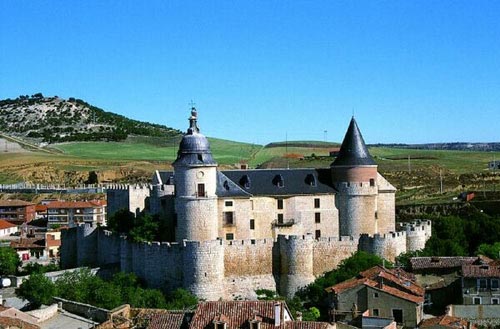
Archives of Simancas in the Castle
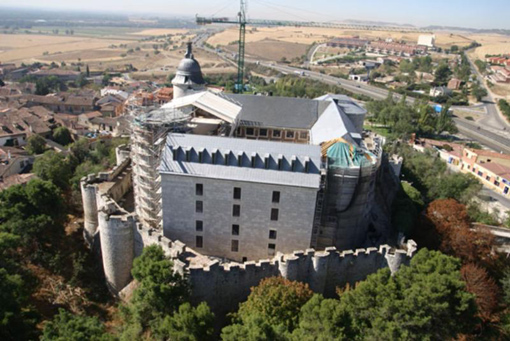
The back of the Castle
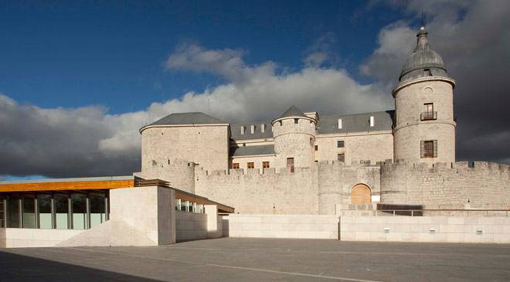
The front of the Castle
One of the main milestones occurred in 1588, when Felipe II granted the Instruction for the “Government of the Simancas Archives”, a key document to understand the management of this archive, as well as of others, in Spain.
On the other hand, the moments of strength or standoff of the Castilian monarchy were reflected in the form of arrival of documents or scarcity of resources. Also the damages, suffered during the War of the Spanish Independence, had important repercussions in what today is the institution.
At present, the AGS is a cultural institution, under the Ministry of Culture of Spain. In its interior, not only the preservation and cataloging of the documents, which it houses, are developed, but it is also a museum and a place, where you can investigate from its funds. These are very extensive and they are organized in almost thirty sections.
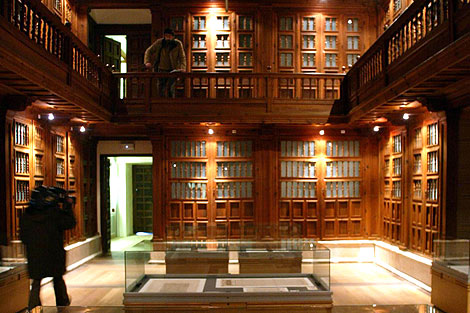
The Library
The Archive of Simancas (first official archive of the Crown of Castile) was created two centuries after the Archive of the Crown of Aragon.
A sixteenth-century State like the Castilian crown, which sought to join the new times of modernity, after the Middle Ages, needed to be surrounded by a perfectly articulated bureaucratic apparatus, and, in that sense, the Archive was crucial. From the outset raised, although without specifying the place, that it was located in a fortress, on the mere question of security, when it came to guarding the documents, produced by the State team.
From the first moment and until recent times, the AGS was not intended for cultural tasks, because it only responded to an express need for a place to keep the documents. In this line, a centralized archive is a point of support for the good government of a Monarch, since, in it, are physically the documents that legitimise his mandate.
Over time, the founding of the Simancas Archives has become a "landmark of Spanish archival history". In a certain sense, it was, since, after several attempts, the idea of establishing an official archive, in Castile, was concreted. In addition, it was given of a pioneering regulation, in its operation, almost five decades later (in 1588).
During the period of the Reconquest, the village of Simancas became importance as a border area. Subsequently, its strategic situation, between the kingdoms of Leon and Castile, gave it an important role, in the peninsular politics. After the conquest of Toledo and its territory, in 1085, the village lost its importance and, in the thirteenth century, it was only one of the many cities of Valladolid. However, it soon ceased to be part of the jurisdiction of Valladolid, since, in 1465, the King Henry IV of Castile rewarded the city of Simancas for remaining faithful to the royal cause, within the framework of the disputes between that king and Alfonso of Castile, with the privilege of nobility and chivalry, to all the inhabitants of the locality, as well as with the exemption of the Valladolid jurisdiction. Thus, between the XV and XVII centuries, were lived the "golden years" of Simancas, in which the establishment of the official archive of Castile was demarcated.
Until 1917, modern and contemporary historiography dated the fortress of Simancas at the time of the reconquest. However, in that year, Francisco Rodríguez Marín published a document in which, apart from other historical data, it is said that the fortress of Simancas had been taken by the Admiral Don Fadrique, in the time of Henry IV and later to be demolished and rebuilt by his son, the Admiral Don Alonso Enríquez. Thus, the date of construction of the present fortress can be located between the years 1467 and 1480.
The castle is so refurbished that it is almost impossible to know how it was originally. Since the Catholic Kings took possession of the fortress, in 1490, all kinds of modifications have been made, from the different heights built, by Felipe II, to the many reforms carried out, to adapt the building to the archive.
Since the founding of the Simancas Archive, all types of conditioning and enlargement works have been produced. The place was conceived to guard documents and not for research, so the ornamentation was not meant to decorate without more, but to remember that behind the institution was the regal power. For example, one of the doors of the AGS was decorated with the coat of arms of Felipe II, which reminded to any visitor who was before a regal institution.
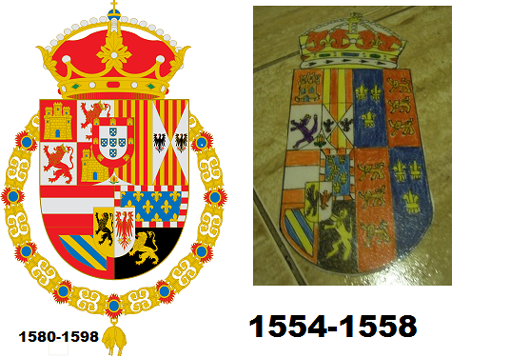
The Coat of arms of Felipe II
Finally, the castle was not a place designed to house an archive, which makes there are some drawbacks that have worried archivists throughout history. The most important of these is the risk of fires, a headache for any director of the archive. On the one hand, the fact that the archive shared space with a jail, increased the risk of books being reduced to ashes. In addition, being a fortress, the building was a prime objective, in the development of armed conflicts, which wreaked havoc, on the institution's funds, in conflicts such as the Spanish War of Independence, between 1808 and 1814.
In this sense, the critical voices, regarding location, have not been lacking throughout the XX and XXI centuries, since the proposals for the transfer of Simancas documents are frequent. One of the voices, that appear most strongly in this line, is that of González Amezúa, who proposes a complete transfer to the National Historical Archive of Madrid.
Well, I hope that you have liked to have known a very important piece of the Spanish History.
Until my next post, kind regards,
Luis.
Sponsored by Costaluz Lawyers.
Please click below:
